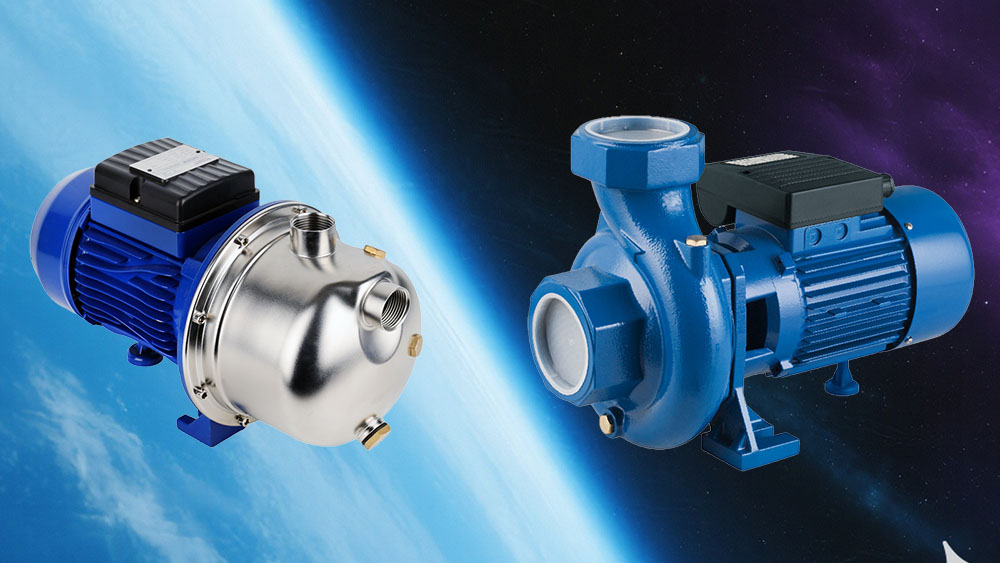+86 13816508465
Pump Knowledge
Aug. 18, 2025

Choosing the right pump for your application can save time, energy, and money. Among the many options available, self-priming pumps and centrifugal pumps often come into consideration for various industrial applications. But how do these two pump types differ, and which is best suited for your needs?
This guide breaks down the distinctions between the two, helping you make an informed pump selection based on your specific use case. By the end of this article, you'll have a clear understanding of how these pumps work, their advantages, limitations, and where they excel.
A self-priming pump is specifically designed to prime itself without manual intervention. It retains a small amount of liquid in its casing, even when the pump is not operating. During startup, this retained liquid mixes with incoming air to create suction, pulling additional liquid into the pump.
Key Features of Self-Priming Pumps
Liquid Retention: The pump casing is designed to hold liquid for effective priming.
Air Handling: Capable of handling air-liquid mixtures, ensuring smooth operation even with intermittent air pockets in the system.
Above-Ground Installation: Commonly installed above the liquid source, eliminating the need for submerged setups.
Applications
Self-priming pumps are popular in industries where reliable priming and ease of use are critical. Typical applications include:
Irrigation systems
Construction dewatering
Wastewater transfer and management
A centrifugal pump uses the kinetic energy of a rotating impeller to move liquid. Unlike self-priming pumps, it must be fully primed with liquid before startup, as it cannot handle air in the system.
Key Features of Centrifugal Pumps
Full Liquid Priming Required: Cannot operate if air is present in the suction line.
Wide Variety of Designs: Comes in various impeller and casing configurations for different liquid types.
Higher Efficiency: Typically more energy-efficient when pumping clean and consistent liquids.
Applications
Centrifugal pumps are widely used in processes where the liquid is readily available for priming. Common applications include:
Clean water systems
HVAC installations
Industrial liquid handling
To determine which type of pump is right for your operation, it’s important to examine their differences across several factors.
1. Priming Method
Self-Priming Pump: Designed to prime itself by retaining liquid in its casing.
Centrifugal Pump: Requires manual or external priming before operation.
2. Startup Requirements
Self-Priming Pump: Can tolerate a dry start and handle air-liquid mixtures.
Centrifugal Pump: Must have a flooded suction or a completely filled system to start effectively.
3. Installation Location
Self-Priming Pump: Ideal for above-ground installations, making it suitable for remote or challenging locations.
Centrifugal Pump: Often installed below or at the same level as the liquid source with a flooded suction line.
4. Maintenance Needs
Self-Priming Pump: Easier to access and maintain since it’s generally installed above ground.
Centrifugal Pump: Maintenance may require additional effort, particularly if the pump is submerged.
5. Cost and Efficiency
Self-Priming Pump: Slightly higher initial cost and marginally lower efficiency due to air-handling design.
Centrifugal Pump: Lower upfront cost and higher energy efficiency when pumping clean liquids.
Self-priming pumps are particularly advantageous for scenarios and environments where ease of use, reliability, and flexibility are essential.
1. Air-Liquid Handling: Effective at managing air and liquid mixtures without losing suction.
2. Quick Restart: Restarting after shutdown is much faster due to retained liquid.
3. Simplified Setup: Eliminates the need for external priming equipment like foot valves.
Despite their benefits, self-priming pumps come with a few limitations:
Efficiency Trade-Offs: Slightly less efficient compared to standard centrifugal pumps.
Limited Suction Lift: Restricted maximum suction height, making them unsuitable for very deep sources.
Larger Footprint: Requires more physical space due to its design.
Self-priming pumps excel in specific situations, particularly where ease of operation and accessibility are priorities. Ideal scenarios include:
Intermittent Operation: Systems that frequently stop and need quick restarts.
Above-Ground Installations: Applications where fully submerged pumps are impractical.
Remote Locations: Environments that demand low-maintenance solutions.
Example Industries and Use Cases
Construction: Dewatering excavations and trenches.
Agriculture: Pumping water for irrigation from shallow sources.
Municipal Services: Handling stormwater or wastewater from lift stations.
Selecting the right pump depends on a thorough understanding of your application needs. While self-priming pumps offer convenience, ease of maintenance, and suitability for challenging installations, centrifugal pumps deliver exceptional efficiency for clean liquid systems with straightforward setups.
When evaluating your options, consider factors like installation location, maintenance accessibility, liquid characteristics, and overall cost-effectiveness. By matching the pump type to your specific use case, you can ensure reliable performance and long-term operational success.
For industries requiring versatile and low-maintenance pumping solutions, a self-priming pump may be the best choice. Alternatively, if high efficiency and streamlined costs are top priorities, centrifugal pumps emerge as a strong contender.
Address
No.17 XeDa Jimei Ind. Park, Xiqing Economic Development Area, Tianjin, China
Telephone
+86 13816508465
QUICK LINKS